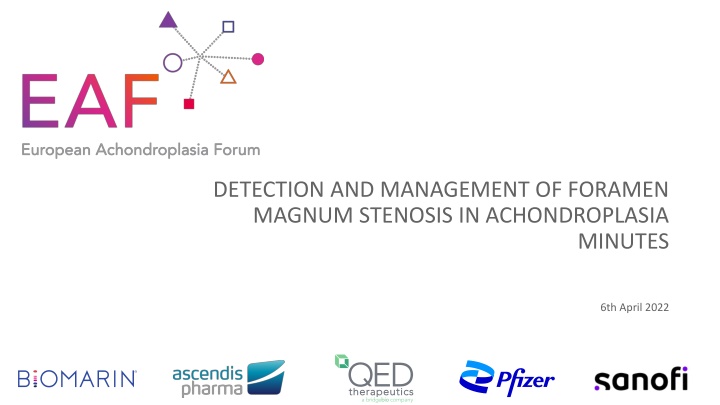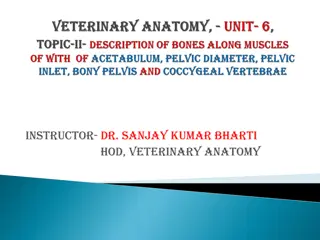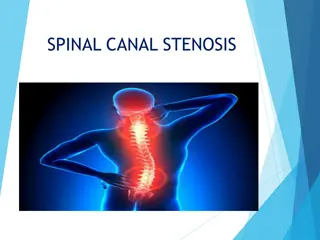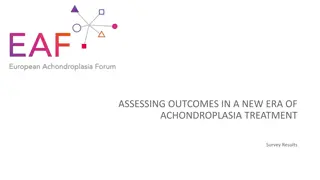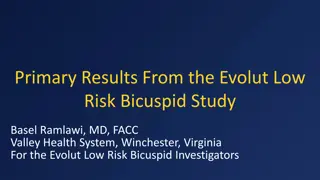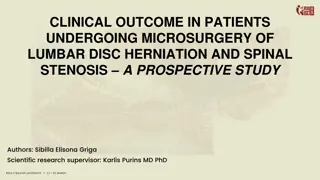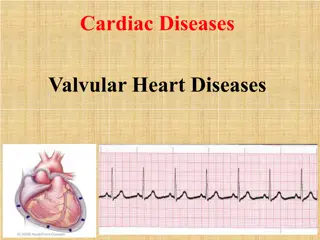Management of Foramen Magnum Stenosis in Achondroplasia Workshop Overview
Workshop on the detection and management of foramen magnum stenosis in individuals with achondroplasia took place on 6th April 2022. The event focused on challenges, screening protocols, intervention indicators, decision-making processes, and management strategies. Key outcomes include reaching an agreement on guiding principles, high attendee satisfaction rates, and a focus on optimizing the management of this condition in clinical practice.
Download Presentation

Please find below an Image/Link to download the presentation.
The content on the website is provided AS IS for your information and personal use only. It may not be sold, licensed, or shared on other websites without obtaining consent from the author.If you encounter any issues during the download, it is possible that the publisher has removed the file from their server.
You are allowed to download the files provided on this website for personal or commercial use, subject to the condition that they are used lawfully. All files are the property of their respective owners.
The content on the website is provided AS IS for your information and personal use only. It may not be sold, licensed, or shared on other websites without obtaining consent from the author.
E N D
Presentation Transcript
DETECTION AND MANAGEMENT OF FORAMEN MAGNUM STENOSIS IN ACHONDROPLASIA MINUTES 6th April 2022
Objectives Understand the challenges and implications of foramen magnum stenosis in individuals with achondroplasia Review current protocols to understand how and when infants should be screened for foramen magnum stenosis Evaluate the indicators for intervention and factors influencing the decision to perform decompression Agree consensus on optimal process for detection of foramen magnum stenosis and decision-making to decompress using the agreed SOP for EAF guidelines Output: Publication to detail the EAF recommendations on the management of foramen magnum stenosis in people with achondroplasia 3
Agenda Detection and Management of Foramen Magnum Stenosis in Achondroplasia Welcome and Introduction Melita Irving (UK) Foramen Magnum Stenosis in Achondroplasia: Choices and Challenges Klaus Mohnike (Germany) Screening for Foramen Magnum Stenosis Genevieve Baujat (France) Identifying Indicators for Intervention Paul Arundel (UK) Decision-making for Decompression Philip Kunkel (Germany) Monitoring and Management of Untreated Foramen Magnum Stenosis Heike Hoyer-Kuhn (Germany) Summary and Close Melita Irving 4
Executive Summary Highest number of registrants (87) attendees (52) and countries represented (17) of EAF workshops Agreement reached on six guiding principles for the management of foramen magnum stenosis in achondroplasia Over 90% of respondents rated the meeting 7 or higher for Relevance to their clinical practice Meeting their expectations Interactivity of the meeting 100% of attendees would attend a future EAF workshop 5
Attendee Overview Detection and Management of Foramen Magnum Stenosis April 2022 Management of Achondroplasia into Adulthood October 2021 Diagnosis and Referral of Achondroplasia May 2021 Number of attendees (total) HCP PAG 52 47 5 33 24 9 24 23 1 Number of sponsors attending 9 12 2 Number of countries represented 17 14 10 6
Guiding Principles Five guiding principles were presented to the group The wording was scrutinised and amended through discussion It was felt that MRI in routine screening required its own principle. An additional statement was developed to cover this Votes were held to establish whether each guiding principle was passed, and on the level of agreement Discussions on levels of agreement or disagreement on final wording, this will be further elucidated in the manuscript and all viewpoints captured
Guiding Principles for the Detection and Management of Foramen Magnum Stenosis in Achondroplasia Item Guiding Principle Vote (%) Agreement (mean; range) A All infants should be monitored clinically for foramen magnum stenosis every 3 4 months from birth to the age of 1 year, thereafter every 3 6 months until the age of 3 years. After the age of 3 years, monitoring for foramen magnum stenosis should be based on individual need and local protocols 100 8.4 (4 10) B MRI imaging should be undertaken as routine monitoring for foramen magnum stenosis at 3 6 months of age and repeated according to findings in other routine assessments 89 7.9 (2 10) C Where signs of compression are observed on screening, infants should be referred as soon as possible to a neurosurgery specialist in a centre experienced in the management of achondroplasia 97 7.6 (1 10) D The decision to decompress the foramen magnum should be made using a combination of clinical, neurological and imaging assessments, evaluated by a neurosurgical specialist experienced in the management of achondroplasia 93 8.9 (5 10) E The decision to proceed to decompression of the foramen magnum should be made jointly by a neurosurgeon experienced in achondroplasia, the individual s family and the wider MDT 96 8.4 (2 10) F Older children and adults with previously undetected foramen magnum stenosis should be managed on an individual basis by the MDT 96 8.3 (5 10) 8
The majority of respondents found that the content matched their expectations and was relevant to their clinical practice How relevant was the content to your clinical practice? How well did the programme match your expectations? 4% 8% 4% 12% 15% 38% 46% 15% 27% 15% 16% 92% rated 7 or higher 92% rated 7 or higher 10 (completely) 9 8 7 6 5 1 (not at all) 10 (completely) 9 8 7 6 5 1 (not at all) 10
Respondents found the workshop interactive and 100% would be interested in attending future EAF workshops How do you rate the interactive nature of the workshop? Would you be interested in attending future EAF workshops? 4% 8% 34% 31% 96% rated 7 or higher 100% interested in further workshops 23% 10 (completely) 9 8 7 6 5 1 (not at all) Yes No 11
